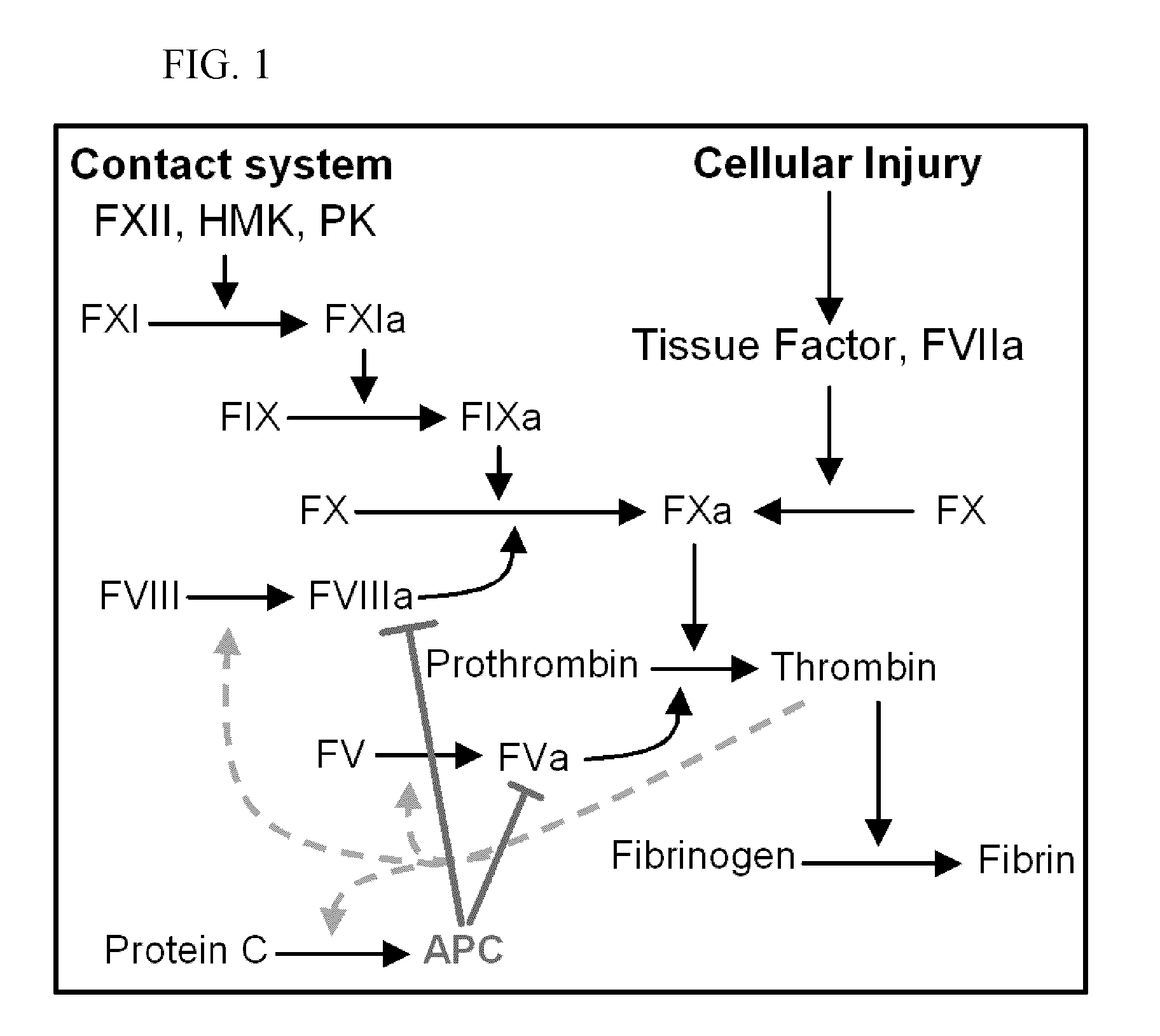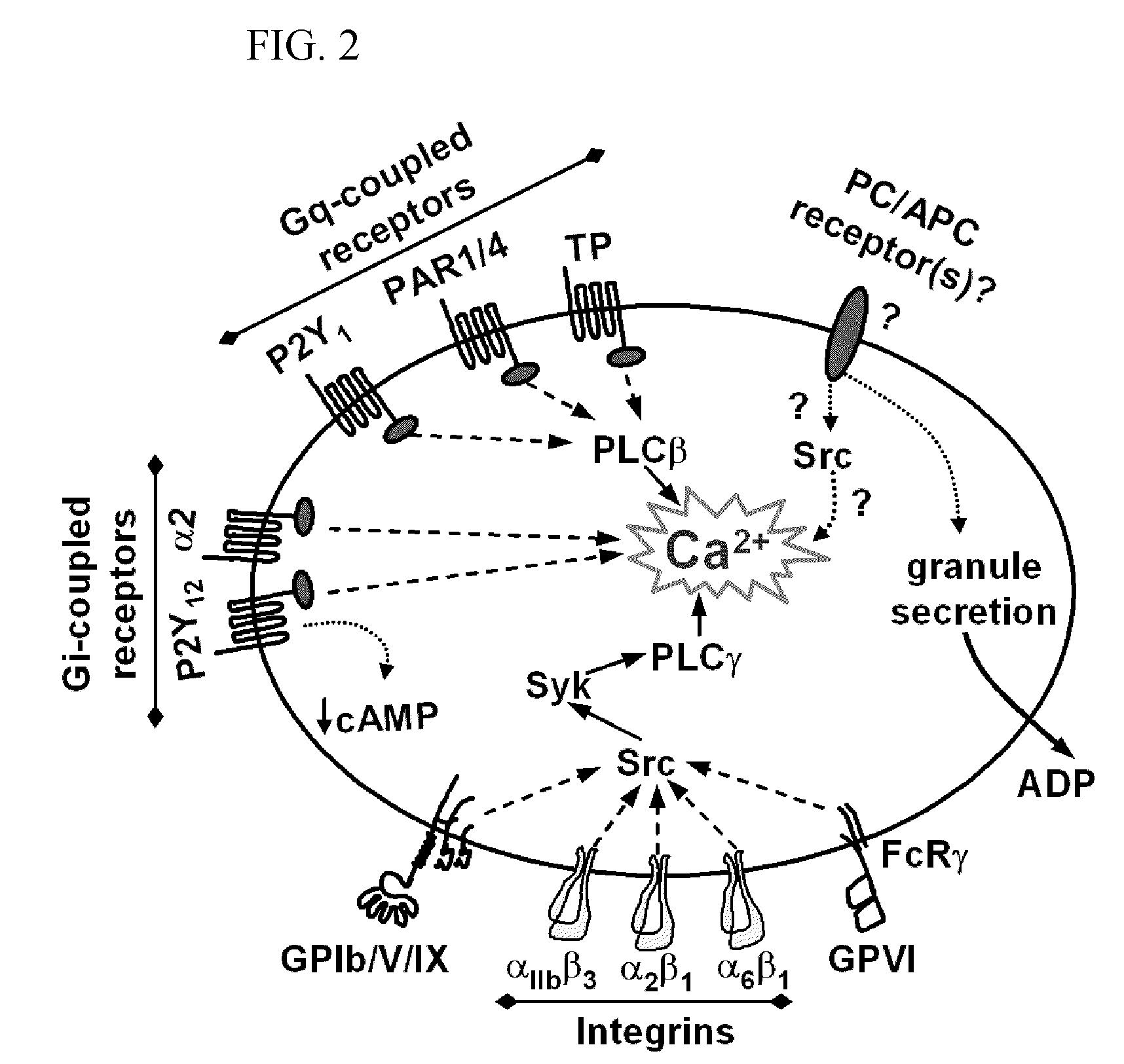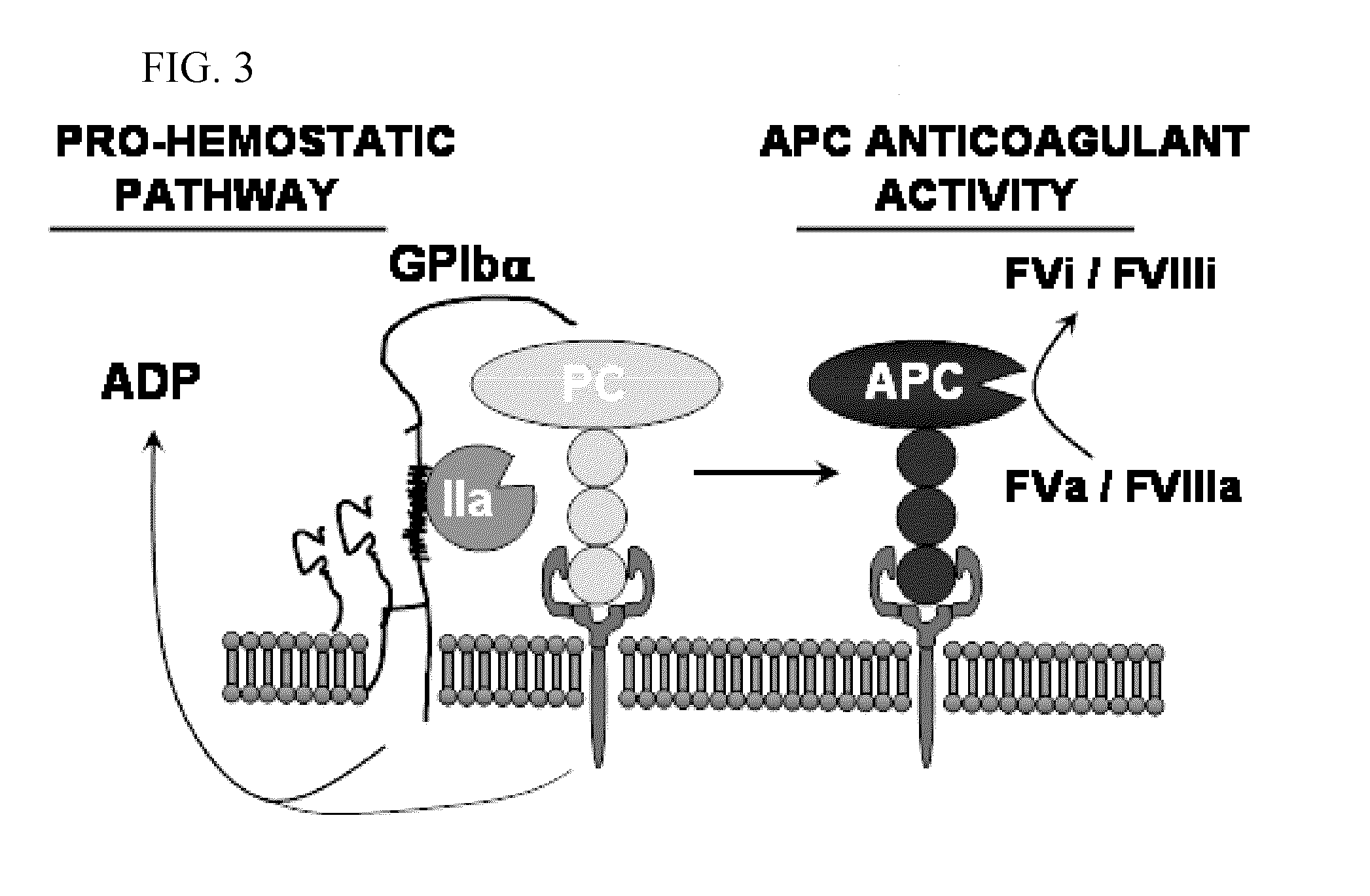Protein c for use in maintaining hemostasis
a technology of protein c and hemostasis, which is applied in the direction of peptide/protein ingredients, drug compositions, extracellular fluid disorder, etc., can solve the problems of severe hemorrhagic side effects and deleterious side effects of agents, and achieve effective hemostasis, promote local clotting, and avoid the formation of thrombosis.
- Summary
- Abstract
- Description
- Claims
- Application Information
AI Technical Summary
Benefits of technology
Problems solved by technology
Method used
Image
Examples
example 1
Methods
Protein C(PC) and Activated Protein C (APC) Polypeptides
[0133]Human plasma derived PC and APC can be purchased from Hematologic Technologies (Essex Junction, Vt.). These PC preparations are free of detectable APC (J Biol. Chem. 281:20077-20084, 2006).
[0134]PC was purified from plasma factor IX concentrate using immunoaffinity chromatography (Gruber et al. Circulation 82:578-585, 1990; Gruber et al. Circulation 84:2454-2462, 1991). Anti-human PC light-chain mAbs designated C3′5 were coupled to CNBr-activated Sepharose 4B (Pharmacia; 3 mg protein / mL gel) in a coupling buffer (0.5 mol / L NaCl, 0.05 mol / L borate, pH 8.5) overnight at 4° C. The Factor IX concentrate was passed over C3-Sepharose in a buffer containing 0.1 mol / L NaCl, 2 mmol / L EDTA, 2 mmol / L benzamidine, 0.02% Na-azide, 0.02% Tween-20, and 0.02 mol / L Tris-HCl, pH 7.4; and subsequently eluted with 3 mol / L NaSCN in 1.0 mol / L NaCl, 4 mmol / L benzamidine, 2 mmol / L EDTA, 0.02% Na-azide, 0.05% Tween-20, and 0.05 mol / L Tris,...
example 2
Characterization of Platelet Adhesion and Activation on PC
[0141]To characterize the ability of platelets to bind PC and APC, purified human platelets were gently pipetted over surface-immobilized PC and APC. The purity of PC and APC was verified by SDS-PAGE. Platelet spreading, which is contingent on platelet activation, was monitored using Normarski DIC microscopy. As shown in FIG. 4A, human platelets underwent complete spreading on PC and APC, and the spreading was characterized by the generation of limited small filopodia followed by wave-like lamellipodia appearing before filopodia formation was complete. Actin stress fiber formation was observed on both PC and APC (FIG. 4B). A similar pattern of platelet spreading and stress fiber formation was observed on thrombin, while a sequential formation of discrete filopodia and lamellipodia was observed on fibrinogen.
[0142]To determine whether platelet adhesion to PC or APC resulted from either a receptor-mediated or an agonist-induced...
example 3
Molecular mechanisms regulating platelet adhesion and activation
[0145]Purified human platelets were exposed to immobilized ligands for 45 minutes at 37° C. in the presence of vehicle, function-blocking antibodies or pharmacological pathway inhibitors. Adherent platelets were fixed and imaged via DIC microscopy. The results showed that addition of the ADP-scavenger apyrase and TxA2 inhibitor indomethacin resulted in a >60% reduction in platelet adhesion on PC and on APC, as well as a substantial reduction in the degree of platelet lamellipodia formation (FIG. 6 and Table 1). In contrast, apyrase and indomethacin had no effect on platelet adhesion and spreading on thrombin. Moreover, platelet lamellipodia formation on PC, APC or thrombin was abrogated in the presence of the αIIbβ3 mAb eptifibatide (FIG. 6). The presence of either a blocking αIIbβ3 or GPIb mAb, whether alone or in combination, did not affect the degree of platelet adhesion to PC, APC, and thrombin under static conditio...
PUM
| Property | Measurement | Unit |
|---|---|---|
| concentration | aaaaa | aaaaa |
| concentration | aaaaa | aaaaa |
| pH | aaaaa | aaaaa |
Abstract
Description
Claims
Application Information
 Login to View More
Login to View More - R&D
- Intellectual Property
- Life Sciences
- Materials
- Tech Scout
- Unparalleled Data Quality
- Higher Quality Content
- 60% Fewer Hallucinations
Browse by: Latest US Patents, China's latest patents, Technical Efficacy Thesaurus, Application Domain, Technology Topic, Popular Technical Reports.
© 2025 PatSnap. All rights reserved.Legal|Privacy policy|Modern Slavery Act Transparency Statement|Sitemap|About US| Contact US: help@patsnap.com



